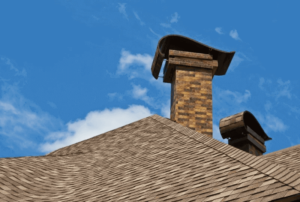Identifying issues with your firebox or the chimney structure can be easy, especially with chimney components that are accessible with visible damages. However, the flue, on the other hand, is a different story. With 15 feet – or more – of tight, enclosed flue between the firebox and chimney, it is nearly impossible to identify damage or chimney issues. Luckily, there is a technology that is made to reach this areas of the flue – closed circuit camera.
Closed circuit camera inspections
Closed circuit camera chimney inspections allows chimney sweeps to look at every part of your flue – without removing your masonry. This gives homeowners the peace of mind that there are no hidden dangers lurking in the flue after a thorough cleaning and inspection.
At Jack Pixley Sweeps, we use a closed circuit camera as a standard part of our inspections. This helps us identify any areas of damage or deterioration in the flue that cannot be otherwise seen. We ask that homeowners to be present during the video scan, as this allows them to see firsthand what is happening inside their chimney system.
When to schedule a closed circuit camera inspection
 Closed circuit camera scans are done as a standard part of our inspections at Jack Pixley Sweeps, as it is super beneficial in any circumstance. However, the following are three instances when it is beneficial to schedule a closed circuit camera inspection.
Closed circuit camera scans are done as a standard part of our inspections at Jack Pixley Sweeps, as it is super beneficial in any circumstance. However, the following are three instances when it is beneficial to schedule a closed circuit camera inspection.
- Buying a home – Buying a home is a major investment, you should protect your new home by getting a closed circuit camera inspection for all chimneys. Because this type of scan is rarely included in standard home inspections, it can help identify any hidden chimney issues.
- Selling a home – Give potential buyers peace of mind by having a closed circuit camera inspection before listing the home. A report from a certified chimney sweep gives potential buyers tangible proof to the condition of your chimney.
- After a natural disaster – After an earthquake, tornado, chimney fire, or natural disaster, it is important to have a closed circuit camera inspection before using your fireplace. This ensures that the fireplace is safe to use – or lets the chimney sweep know what repairs are needed.
A video inspection using closed circuit cameras is the best way to get a complete pictures of the exact condition of your entire chimney system. At Jack Pixley Sweeps, we are proud to offer this service to our customers; as long as our cameras fit in your flue! For more information on the benefits of closed circuit camera inspections or to schedule your next chimney appointment, contact us today!

Jack Pixley Sweeps uses a chim-scan camera on each chimney flue 6″ or greater
When one of our Chimney Safety Institute of America (CSIA)-certified technicians from Jack Pixley Sweeps visits your home to perform your annual chimney inspection, we are certain you will be impressed and very satisfied with our special touch to the inspection: the Chim-Scan Closed Circuit Internal Evaluation System. Without this video technology, the inspector cannot see every inch of your chimney’s interior. Nor can he show you exactly what is wrong with your chimney. With the Chim-Scan camera, we can examine every area of your chimney, and we will show you the video footage after the inspection and explain our findings to you. We would like to tell you more about this phenomenal technology and why an inspection using the closed circuit Chim-Scan camera is so much better than one without this technological tool.
What Is a Chim-Scan?
According to the Estoban Foundation, the company that developed and manufactured this product, a Chim-Scan is a remote imaging apparatus designed to be raised or lowered into a chimney that provide the viewers, such as the chimney inspector and the homeowner, the ability to see every inch of the interior of a chimney up close. Via the Chim-Scan Closed Circuit Internal Evaluation System, the inspector and the homeowner have a view of areas that cannot be seen by regular visual means.
Why Is Using a Chim-Scan During a Chimney Inspection So Important?
Since the Chim-Scan camera can see every inch of your chimney’s interior, we may discover damage that would have been missed without a Chim-Scan. Damage to the inside of your chimney typically needs repairing before your fireplace can be safely used. Cracks in any part of your flue allow the toxic gases from combustion to leak out into your home. If you continue to have fires when your flue is cracked, you run the risk of further cracking due to parts of the flue not being protected from the heat of combustion. A Chim-Scan can also provide you with photographic and/or video evidence of damage if needed for insurance purposes.
What Are Other Benefits of the Chim-Scan Closed Circuit Internal Evaluation System?
Not only does a Chim-Scan find “hidden” flue damage, but it can also be used to diagnose chimney fire damage, find “patch” jobs done by amateurs, and indicate the presence of animals and/or their nests inside a chimney. Especially important after a chimney fire, it can help indicate the cause of the fire, how much damage occurred in the fire, and thoroughly document the situation for an insurance claim. After the scan has been conducted, there are different types of media you may receive including written reports, pictures, and video recordings.
Are you interested in the most thorough chimney inspection you can have? Contact Jack Pixley Sweeps to schedule your annual chimney inspection with the benefits of a Chim-Scan camera.
The Proper Way of Removing Ash from Your Fireplace
There are many things you can do with ash; it’s not just dirt in your fireplace. It can be used in growing and nourishing plants. Artistic people even use it as replacement for charcoal in making beautiful drawings. However, these things still need to be done with caution because ash can also be harmful to the body. Not everyone’s immune system can tolerate the toxins that are in ash. These toxins in the ash that can trigger a dangerous cold for people with sensitive noses and even an asthma attack in worse cases.

Removing ash in a timely manner also cuts down on the dust in your indoor air.
If you can’t find a particularly good use for ash, it is better to throw it out than to let it accumulate. This is especially true in the fireplace. That’s why it’s important to know how to properly dispose of ash. My company, Jack Pixley Sweeps will walk you through the things that will be done in removing ash from your fireplace.
Where there is Fire, there is Ash
Ash results from the burning of combustible materials. Wood, what we usually use in a fireplace, is one of many examples. Ash stays in the firebox to either help re-ignite flame or simply cool down and be swept out. It can be very easy to remove ash if you know what you have to do, but it can be extremely challenging for those who have no idea what they’re doing. To address this, Jack Pixley Sweeps has devised a well laid out plan to help lessen the trouble of properly removing ash in your fireplace. It is a step-by-step process that is preferably done by a professional sweep so that bigger problems are prevented.
The Process
The first step is to prepare your metal trash bin and dust pan. Metal is used as a precautionary measure because there is still a chance that pieces of coal will be hidden in the ash and it could burn through other materials if you’re not careful. Carefully slide the ash into the dust pan and make sure that you can properly remove the ash without it touching the floor. Take note that the ash needs to be cool before you do this to prevent little bits of charcoal from setting off a fire. Once it’s in the dust pan, transfer it into the metal trash bin, seal tightly because the lack of oxygen will also help put out coals just in case, and place outside your home.
Most of the time it is not necessary to totally remove all the ash. If you are constantly using your fireplace especially during winter, we suggest you keep about an inch thick of ash so that you won’t have trouble re-igniting the flame.
Like we said before, complications can be avoided when you call on a professional. Our CSIA-certified chimney sweeps are outstanding in both chimney sweeping and fireplace maintenance. We guarantee that our services are worth every penny you spend. Jack Pixley Sweeps: “The name you can trust!”
 Closed circuit camera scans are done as a standard part of our inspections at Jack Pixley Sweeps, as it is super beneficial in any circumstance. However, the following are three instances when it is beneficial to schedule a closed circuit camera inspection.
Closed circuit camera scans are done as a standard part of our inspections at Jack Pixley Sweeps, as it is super beneficial in any circumstance. However, the following are three instances when it is beneficial to schedule a closed circuit camera inspection.

